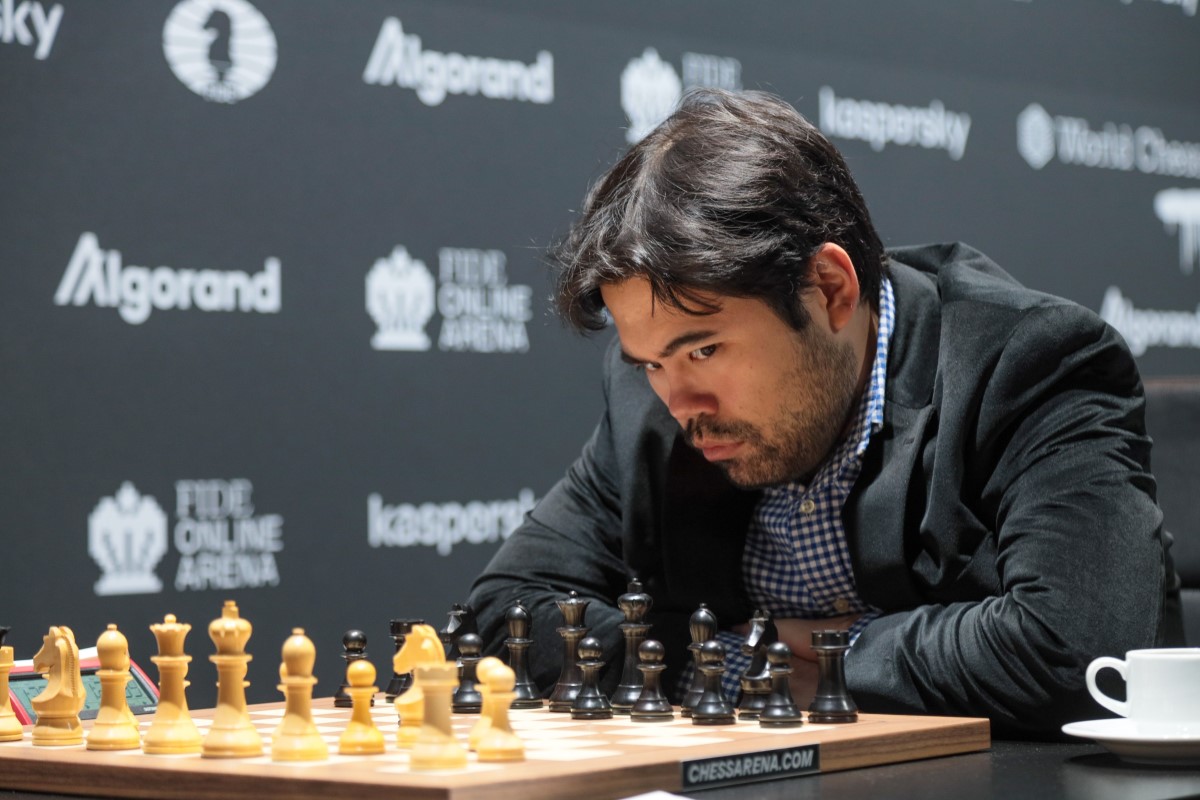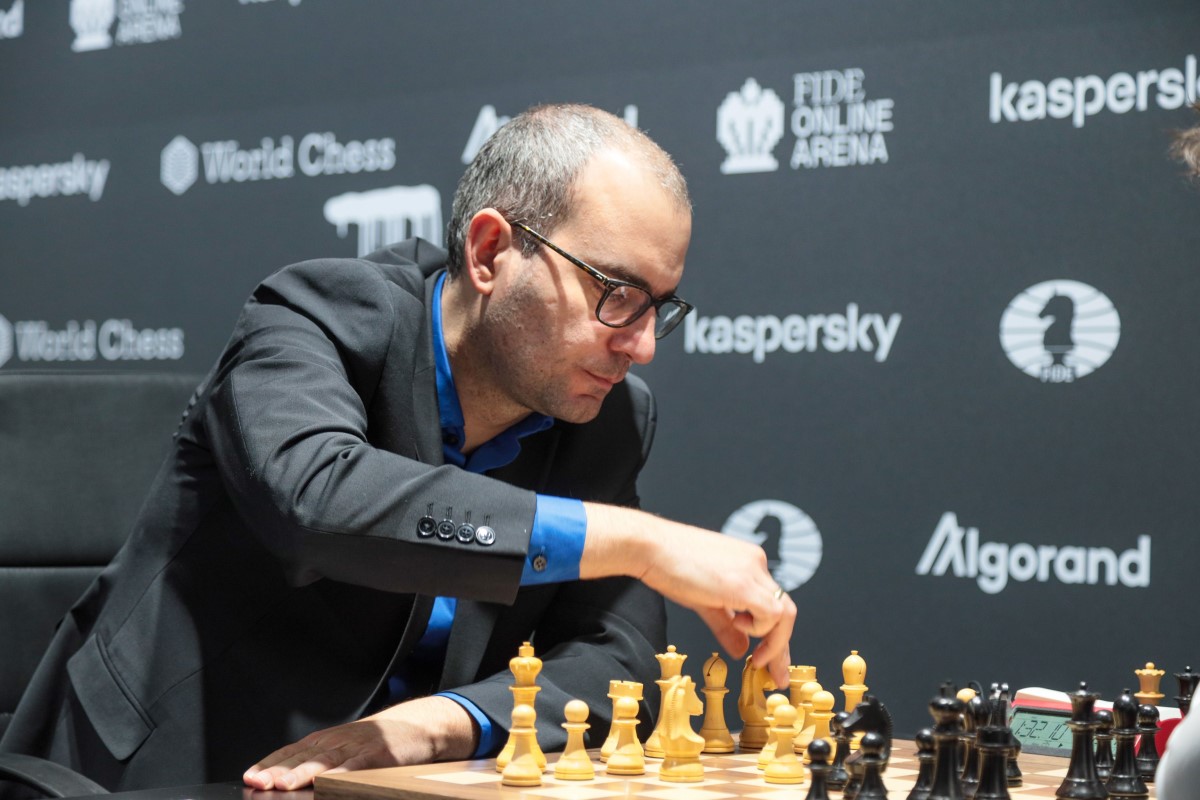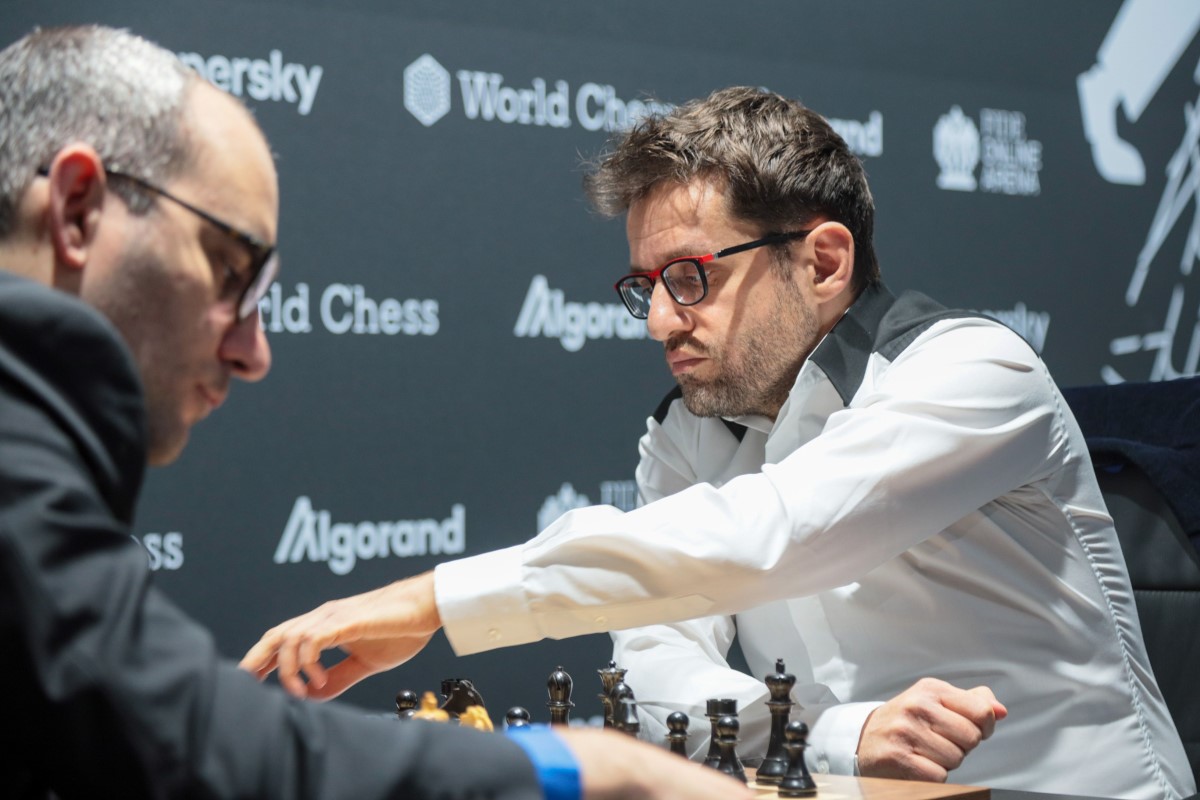


 It did not take long for draws to be agreed on Sunday in Berlin. After an exciting first day in the semifinals of the Grand Prix, in which both Levon Aronian and Hikaru Nakamura scored convincing wins with white, their rivals did not manage to win on demand to force tiebreaks. Leinier Dominguez was unable to create enough imbalances out of the opening against Aronian, while Rapport agreed to a draw from an inferior position against Nakamura.
It did not take long for draws to be agreed on Sunday in Berlin. After an exciting first day in the semifinals of the Grand Prix, in which both Levon Aronian and Hikaru Nakamura scored convincing wins with white, their rivals did not manage to win on demand to force tiebreaks. Leinier Dominguez was unable to create enough imbalances out of the opening against Aronian, while Rapport agreed to a draw from an inferior position against Nakamura.
Fatigue played a big role in both matches. Dominguez and Rapport barely made it past the group stage, as they first won on demand and then beat strong opponents in tiebreaks to reach the semis. Moreover, their rivals in the tiebreaks came from showing strong performances in the double round-robin, as both Radoslaw Wojtaszek and Wesley So had been the frontrunners in the race to reach the knockout in their respective pools.
Given these circumstances, Dominguez and Rapport will probably feel satisfied with the 7 GP points they gained in Berlin. Their performances leave them both with decent chances of getting one of the two Candidates spots that are up for grabs in the series. While Rapport is set to play the second leg in Belgrade starting March 1, Dominguez will return to Berlin for the third leg that kicks off on March 21.

A principled player — Leinier Dominguez
Now let us recap how Aronian and Nakamura became the finalists of the 16-player tournament.
The five-time US champion arrived in Berlin as an inactive player, meaning he had not played a single classical game in over two years. In the meantime, however, Naka became the most popular chess streamer in the world, while showing strong performances in the online events organized by the Play Magnus Group.
At the end of last year, it was announced that Nakamura and Daniil Dubov would get the two wildcards spots at the Grand Prix series. FIDE’s decision to invite the US grandmaster was criticized given his lengthy period of inactivity — it was mentioned that Naka could have participated in the Sinquefield Cup and the US Championship to avoid dealing with any travel restrictions related to the pandemic.
A factor probably considered by the organizers, though, was that the 34-year-old did intend to participate at the Grand Swiss in Riga, but publicly rejected to make his way to the Latvian capital while the European country was going through a hard lockdown:
If there is indeed a hard lockdown in Latvia starting in a few days, out of respect for Latvians suffering with Covid and for the health and safety of myself and my trainer, I will not be competing in the Grand Swiss chess tournament in Riga.
— Hikaru Nakamura (@GMHikaru) October 19, 2021
Remarkably, despite all these contingencies, we now know that the man born in Hirakata might nonetheless participate in the next edition of the Candidates Tournament.
Once in Berlin, he reminded the chess world why he was at some point considered as a potential challenger of Magnus Carlsen’s supremacy. Nakamura defeated Andrey Esipenko and Alexander Grischuk in the first five rounds of the group stage, displaying excellent opening preparation and his usual strong technique to take the sole lead going into the final day of action in the double round-robin.
Getting a spot in the semis was never going to be that easy against such strong opposition, though, as Naka survived a clearly inferior position against Esipenko in round 6 to reach the knockout stage — had the young Russian made the most of his chances, he would have grabbed first place in pool A ahead of Nakamura.
His fans and colleagues were happy to see him playing at the highest level:
Even before the pandemic hit, Hikaru's play seemed really off for awhile. Factor in 2 years of inactivity, and it has been a very long time since I saw this version of him play classical chess. It's such a delight to see him on such great form.
— Sam Shankland (@SamShankland) February 12, 2022
In the semifinal against Richard Rapport — currently ranked 11th in the world — Naka took his chances to win on Saturday with the white pieces, and safely held a draw in the rematch.
Rapport stopped trying to create winning chances and agreed to a draw in this position. In fact, with two strong centralized knights and more space in the position, it is Black who might try to get an edge here.
Select an entry from the list to switch between games
This strong performance also feels a bit like a comeback for Levon Aronian. While still representing Armenia, the elite grandmaster had a somewhat disappointing showing in his last classical tournament, the Grand Swiss in Riga. Aronian was the second seed in the large event, but only managed a 6½/11 score to finish 1½ points behind winner Alireza Firouzja.
We should not forget, though, that the man from Yerevan is still the sixth-highest rated in the world. Perhaps, since he was among the top 3 in the world for a good portion of the previous decade, we got used to seeing him fighting for first place in almost every tournament he participated.
Moreover, after finishing last at the 2018 Candidates Tournament, he failed to qualify to the 2020 edition of the 8-player qualifier to the World Championship match, which prompted some pundits to question whether he still has what it takes to fight for the world crown.
Aronian’s performance in Berlin proves the contrary to be true. His strong results in rapid tournaments, be it online or over the board, show that his creativity and acute tactical eye are still top-notch. Now representing the United States, Aronian achieved a remarkable 4½/6 score in the group stage, as he collected three dominating victories to become the only player who reached the knockout stage with a round to spare.

A player we are likely to see again in a Candidates Tournament — Levon Aronian
In the semifinals against an in-form Leinier Dominguez, Aronian handled a double-edged superior position confidently to win his game with white. We saw a few imprecisions by the US grandmaster on Saturday, but also a remarkable ability to deal with the situation pragmatically, making full use of his advantage on the clock and finding the winning variation when his rival faltered.
The rematch saw Dominguez failing to complicate matters in the opening. Aronian kept things fully under control and — in an already simplified position — offered a queen swap that all but left his Cuban rival without chances to fight for a win.
It is tough to find an active plan for White with realistic possibilities of creating imbalances. Dominguez spent 12 minutes on 22.Rb1, but after 22...Qxe5 23.Bxb4 Qe2, he had to resign himself to the fact that there was no chance his opponent would lose the thread while only needing a draw from such a straightforward position.
The game lasted eight more moves, but the result was no longer in doubt. Draw.
Select an entry from the list to switch between games